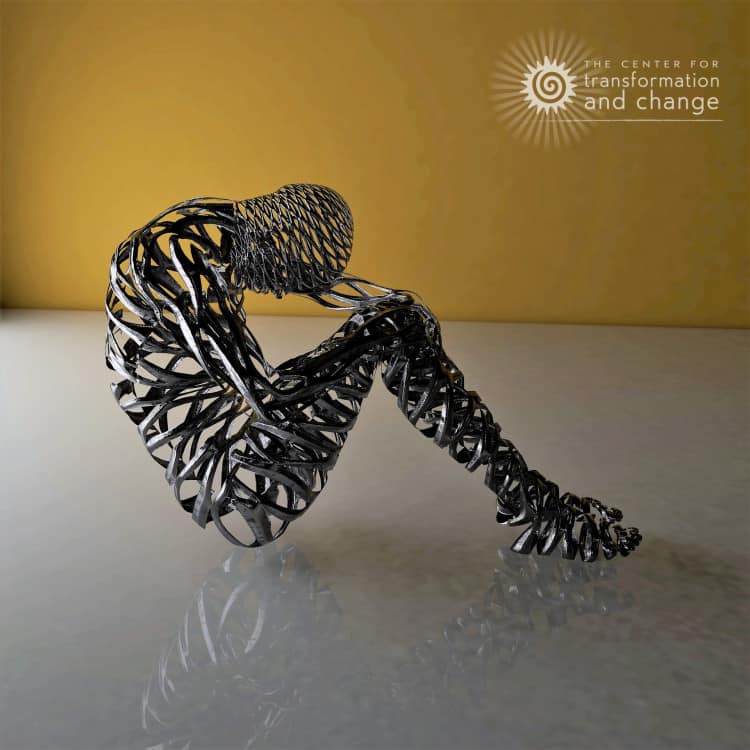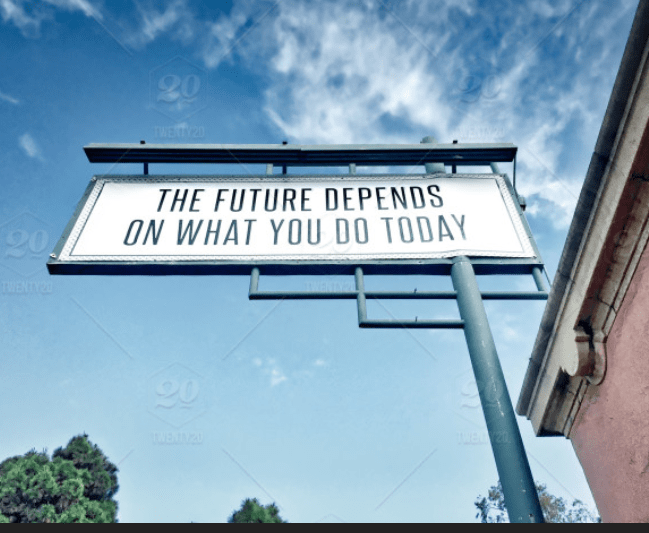Part 3: Infusing Diversity and Inclusion Into Everything We Do
Most facilitators of courses and training sessions can infuse issues of diversity and inclusion to a far greater extent than they currently do. In my first two posts (below this post starting from the bottom) I explore ways to infuse diversity using the metaphor of creating a layer cake ~ starting with a solid foundation:
Layer 1
- Acknowledge the organization’s commitment to creating an inclusive environment for all members.
- “Do no harm.”
- Encourage participants to recognize the full breadth of differences in the organization and those they serve.
- Begin to explore their role and responsibility in creating an inclusive organization for all members.
Layer 2
- Use examples and images that shift the traditional ways of depicting people based on their Insider and Outsider group memberships.
- Design activities to minimize any negative differential impact on members of different social identity groups by race, nationality, gender identity, sexual orientation, level, age, ability/disability, etc.
The 3rd layer of infusing diversity and inclusion involves our role as facilitators. While the content of our sessions, the WHAT we teach, is important, I believe that HOW we teach may be equally, if not more, critical to participant learning and retention. In subsequent posts I will focus on more advanced facilitation tools, but in this post I explore some basic ways most every facilitator can infuse diversity and inclusion by the following actions:
- Design activities so participants interact with and learn from a wide variety of people.
- Invite verbal participation from a full range of participants across group memberships.
- Acknowledge the input and contributions across the range of group memberships.
- Pay attention to the content of what is discussed and notice which issues of diversity are discussed and which, if any, are not; and invite participants to broaden the conversation.
- Track group dynamics for common unproductive behaviors that undermine authentic dialogue; and respond in ways that re-establish a productive learning environment.
Whether one is teaching about stress management, world history, effective communication, career skills, or economics, these facilitation tools can help create the container to deepen learning as well as infuse issues of diversity and inclusion.
1. Design activities so participants interact with and learn from a wide variety of people.
When facilitators let participants form their own discussion groups without any direction, most people seem to choose to work with those they already know and with whom they feel comfortable ~ usually people who are much like themselves. Encouraging/requiring participants to interact with people different from themselves provides the opportunity to broaden their perspectives as well as increase their comfort working across differences. Below are a few ways to form more diverse working groups:
- Use activities that require interaction with new people: concentric circles or a BINGO activity provides a structure that has participants easily talk with a variety of new people.
- Form groups randomly by counting off, pre-assign group #’s that are listed on their handouts or name tags, or use a quick icebreaker: find a new partner who….(is wearing the same color as you; is in a different type of job than you; who grew up in a different state or country than you…)
- State: “I believe we learn more when we interact with the widest range of people as possible. So as I move you into different groups in this session/course, please work to meet new people and have conversations with those you don’t know very well.”
- State: “Many people tend to work with and socialize with those that are more like themselves. So in this session/course, I’d like you to intentionally seek out people who are different from you in some way…so we can broaden our connections and learn from as many people as possible. So as you form pairs or a small group, pay attention to making them as diverse as possible by group memberships, such as years of experience, age, job function, race, ethnicity, gender, etc.
2. Invite verbal participation from a full range of participants across group memberships.
It may be useful to increase your awareness of who, by group membership, is participating during large group discussions. I often need to intentionally pay attention and track who shares in the room and see any patterns by age, level in the organization, sex/gender, race, etc. More often people with multiple memberships in insider/dominant groups tend to speak up more frequently and talk for longer periods of time. The major exception to this pattern has occurred during discussions related directly to issues of inclusion and diversity, when members of multiple dominant groups tend to be far more quiet during the conversation. Regardless of the particular pattern, if facilitators notice an imbalance of participation, they can use a variety of tools to encourage a broader range of voices, including:
- I’d like to hear from some new voices….from people we haven’t heard from lately….
- I’m appreciating this conversation, and I’d like to broaden the number of voices. Who else has something to add?
- I’m noticing that a few people are sharing their perspectives, but we haven’t heard from a number of folks yet….I’d like to open up the space for people who haven’t yet shared….
- I believe the learning is far deeper when we explore a wide variety of perspectives. Who else has something to add that may be different from what has already been said?
- I’m noticing that most of the folks who have shared recently are managers; I’m curious what some of the rest of the staff think about this topic?
- I’m appreciating the comments so far, and most seem to be from people who are newer in the organization. I’m curious what people who have over 15 years experience think?
Facilitators can also use various learning methods to increase verbal participation, including:
- Buzz pairs: Partner participants with someone they don’t know well and give them 2 minutes to talk about whatever is NOT being talked about, i.e., ideas, reactions, solutions, feelings, etc. Then ask for short report outs from each dyad or move back into a large group discussion.
- Buzz then brainstorm: After the 2-minute buzz session, have participants brainstorm what they discussed and chart their ideas. Then start the large group discussion based on what was charted.
- Stations activity: Identify 4-6+ topics you want ideas/input on. Put one topic at the top of each piece of chart paper. Divide participants into small groups and assign each group 1 chart. Give them 3+ minutes to brainstorm and list ideas; then move each group to another “station,” and ask them to review what’s already written, and brainstorm other ideas. You can also ask them to put a check mark by ideas they like. Pull group back together and have a large group discussion.
- Individual reflection time: Give each participant a 3×5 card and ask them to individually write an idea/solution. Collect them anonymously and read into the group. Options: chart them all; have people read them into the group; post them on the wall and ask people to go around and read them. Note: You can use this activity to gather feelings and/or reactions ~ Ask participants to individually write how they’re currently feeling ~ gather anonymously, and have people read them into group. Lead a discussion of how people relate to the feelings/reactions they heard.
- To explore the pros/cons of an idea in more depth: Give participants time to think about at least 1 pro and 1 con for the idea. Then go around the room and:
- Each person shares 1 positive outcome of this idea
- Then each person shares a possible pitfall or draw back
Variation: Form dyads or triads and ask them to generate 3 pros and 3 possible draw backs without discussing them. Then have groups report these into the room.
- Perspective taking: Form small groups and assign each 1 perspective to represent. Give them 10 minutes to discuss and be ready to share:
- What issues might someone with this perspective have?
- What concerns?
- What ideas for moving forward?
- Pick-a-question activity: Ask each person to write a question or issue on a 3×5 card that they want discussed by the group. Collect these and put into a basket. Ask for a volunteer to pick one out (without looking at it) and respond/answer in the large group. Then invite others to comment.
- Use a Standing Continuum to take the temperature of the group: Ask participants to stand on a continuum from 0-10 that reflects their feelings, attitudes, perceived skill level, perceived knowledge level, readiness level, etc. Then have them notice any patterns about where people are standing; and have then turn to a partner to discuss why they stood where they did; then discuss as a large group.
3. Acknowledge and engage the input and contributions across the range of group memberships.
I have been in too many sessions where the facilitator seemed far more enthusiastic about some people’s comments than others; and upon reflection, I often noticed a pattern by group membership of whose comments were acknowledged and engaged, and who’s seemed to “plop” and go unaddressed. Unfortunately, I notice this same unconscious pattern in myself at times!
Research of teachers has shown the tendency to call on and positively reinforce the comments of boys more than girls ~ even after the teachers were made aware of their unconscious behaviors! And research has also shown that counselors tend to treat young, attractive clients more positively than those that do not fall into these group memberships. In my experience I have observed participants who have multiple insider/dominant group memberships often get more time and attention than those who have multiple outsider/subordinated group memberships. For example, in most types of sessions (not stand alone diversity and inclusion workshops) I see the comments of leaders get more attention than those from students or lower level employees, the comments of whites get more serious consideration than those of people of color, the input of men get assumed to be accurate while the comments from women are more often questioned, and the comments from older, more experienced participants given more credibility than those from younger, newer participants.
I have to be very intentional to offset any unconscious bias I have, and instead, consistently respond equitably to all participants as I work to find a way to use their comments to further learning goals. It is critical that facilitators pay close attention to how they acknowledge and respond to participants across identity groups, and to become increasingly aware of any unconscious biases or tendencies to favor some groups over others. Making sure that we give everyone, regardless of group memberships, the same degree of attention and respect models a key principle of diversity and inclusion and increases the chances for a more productive and engaging learning environment.
4. Pay attention to the content of what is discussed and notice which issues of diversity are discussed and which, if any, are not; and invite participants to broaden the conversation.
As we infuse issues of diversity into the content of courses and workshops, it is important to pay attention to which topics of inclusion get addressed and which, if any, tend to not get on the table for discussion. I believe it is usually helpful to use a broad range of examples and situations that depict a full breadth of differences so that participants can continue to deepen their cultural competencies to serve the increasingly diverse client/customer/student populations.
I find it helpful when facilitating to track the conversation regularly and notice the issues being discussed. If I notice that only a few topics of diversity are being addressed, I might ask the group to reflect on its process:
- “As you think about the last 10 minutes or so of conversation, what topics of diversity have we been discussing? As we continue I’d like us to also broaden the conversation to also include other issues of difference.”
- “What are you noticing about the types of topics we are discussing? Any thoughts about why this might be? Who can bring in another topic of difference to add to our conversation?”
Another common dynamic I track is that some groups tend to avoid or move away from certain topics whenever they come up or not engage them as readily. In these situations I might respond in an attempt to raise awareness of this pattern as well as re-center a broader range of issues in the conversation:
- It seems that whenever we start talking about issues of race, someone changes the topic back to age or sexual orientation. Has anyone else noticed this? What do you think might be under this dynamic?
- I’m noticing that the only time we talk about issues of gender or sexism is when a woman brings it up. Anyone else track this? Why might this be happening in our group?
5. Track group dynamics for common unproductive behaviors that undermine the learning goals; and respond in ways that re-establish a productive learning environment.
Another way that facilitators can infuse attention to diversity and inclusion in their courses and workshops is to consistently create and maintain a learning environment where all participants are treated with respect. In subsequent posts I will explore ways to respond to these as well as more blatant, prejudicial comments and behaviors. In this 3rd layer of infusing inclusion it is important for facilitators to track the more subtle participant behaviors that feel disrespectful and disruptive to other participants, and to respond in ways to re-establish a sense of safety, connectedness, and respect.
Review the following list of unproductive participant behaviors as you consider these questions:
- How often do you notice participants engaging in the following behaviors?
- How, if at all, do these behaviors impact others and undermine learning outcomes?
- Are there any patterns, by group membership, of who behaves in these ways.
- Interrupt and talk over others
- Ignore the ideas and input from other participants
- Talk more frequently and for longer periods of time than other participants
- Often are the first to speak
- Pay far more attention and give more credibility to the ideas and input from members of insider/dominant groups (people who are top leaders and managers, more experienced, older, men, white, heterosexual, Christian, gender-conforming, attractive, or light-skinned, etc.)
- Minimize or dismissed the feelings, perspectives, and experiences of others
- Get defensive and argue without first seeking to understand the other’s perspective
- Belittle, make fun of, or judge the comments of others
- Put down others or make snide/sarcastic comments
- Engage in side conversations when others are talking
- Talk down to others in patronizing ways
- Raise their voice or use an aggressive style to try intimidate or silence others
- State that their view and perspective is the only right way, the best way
While people can do these behaviors out of their outsider/subordinated group memberships, there is often an additional negative impact when participants act out these behaviors from their insider/dominant group memberships towards members of outsider/subordinated groups. It is important that we increase our ability to track these unproductive dynamics and consistently intervene to ensure that all participants feel respected, heard, valued, and included in our sessions.
Regardless of the topic of the course or workshop, educators can model and teach about issues of diversity through the ways they facilitate and respond to participant comments and behaviors. It has been said that participants may not remember what they learned, but they will remember how they felt in your session. Facilitating in ways that create learning environments where people feel respected and valued, regardless of their group memberships, models the types of inclusive environments we are working to create in our organizations. We can teach about diversity and inclusion through the process of how we facilitate.
In the next few posts I will explore the next layers of infusing diversity and inclusion in educational sessions ~ directly discussing the issues of insider/outsider group memberships, discrimination/exclusion, and privilege in the content of the class/workshop.



4 Comments
John Leeke
Kathy, great stuff!!! Do you plan to publish this somewhere?
Kathy Obear, Ed.D.
Thanks John! I’ve just expanded my Navigating Triggers book outline to start with some foundation concepts and tools about facilitating and design…til it’s published, I’m having fun blogging! Hope all is well, KO
Dafina Stewart
Kathy, another great post! I’ll definitely be remembering these strategies as I teach and do trainings. Thank you for taking the time to share this!
yahoo
Superb site you have here but I was curious if you knew of any
forums that cover the same topics talked about in this article?
I’d really love to be a part of group where I can get responses from other knowledgeable people
that share the same interest. If you have any recommendations, please let me know.
Thanks a lot!